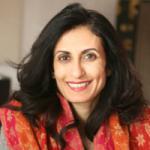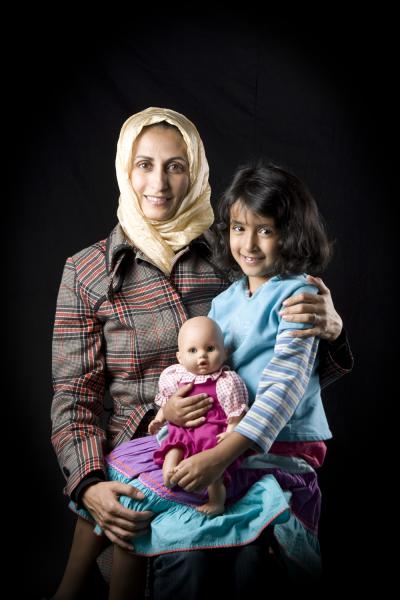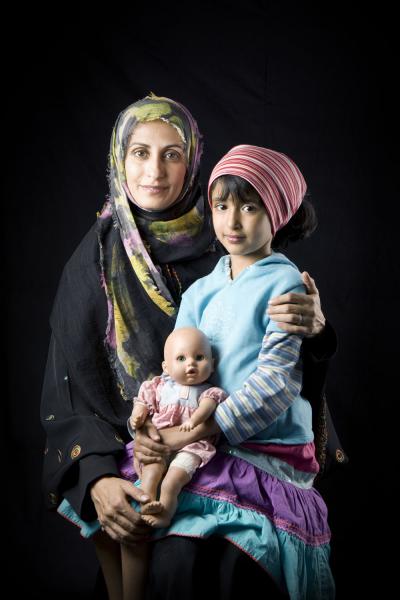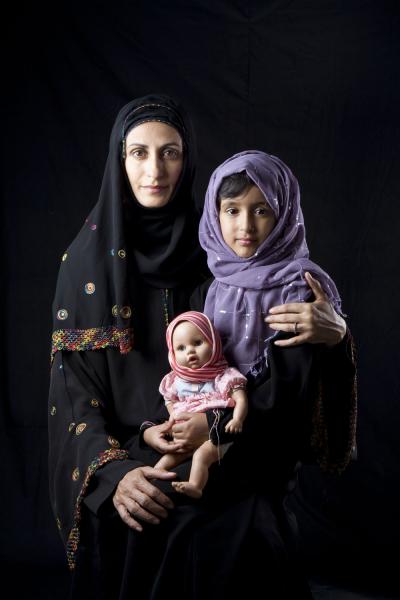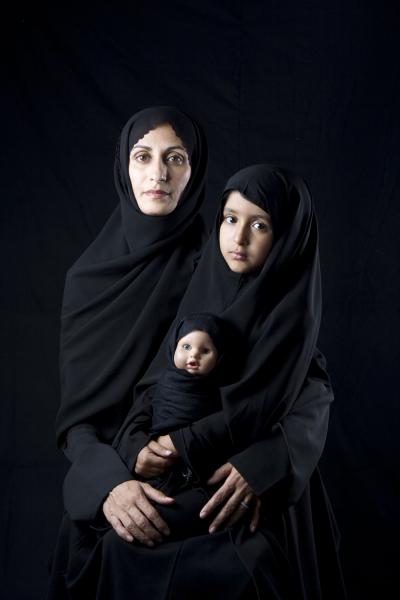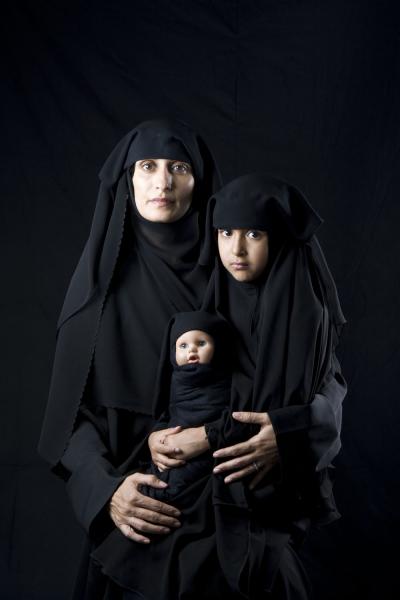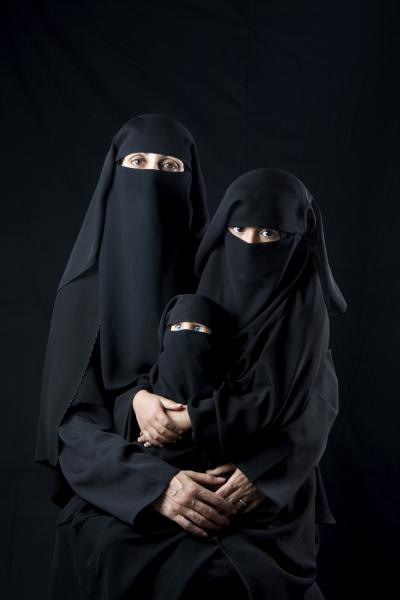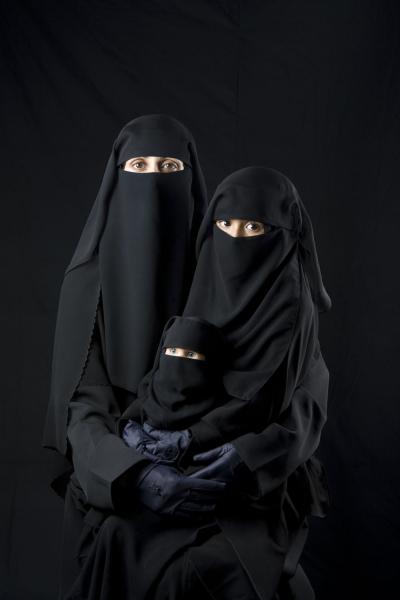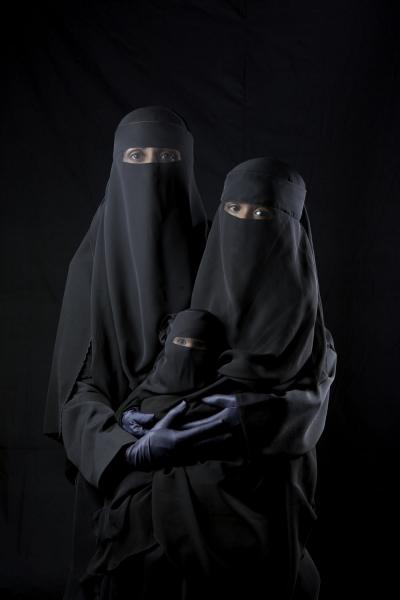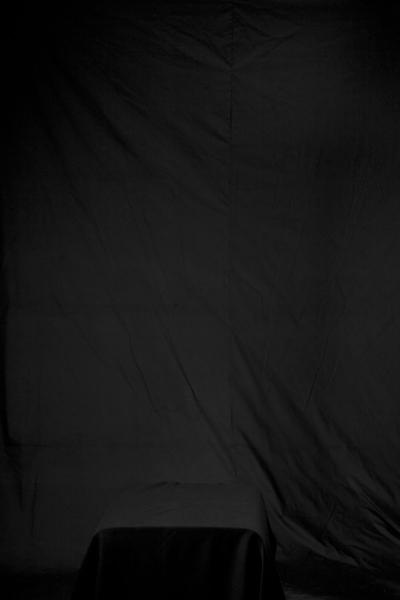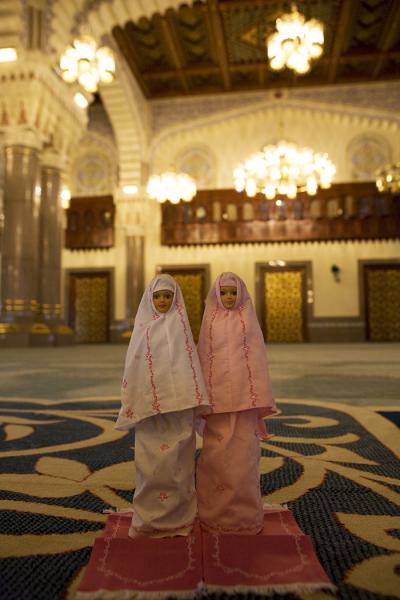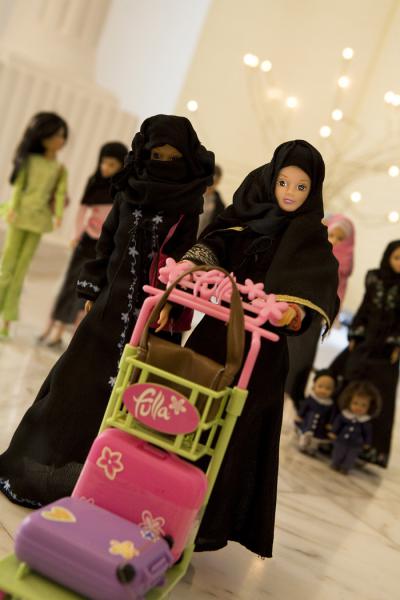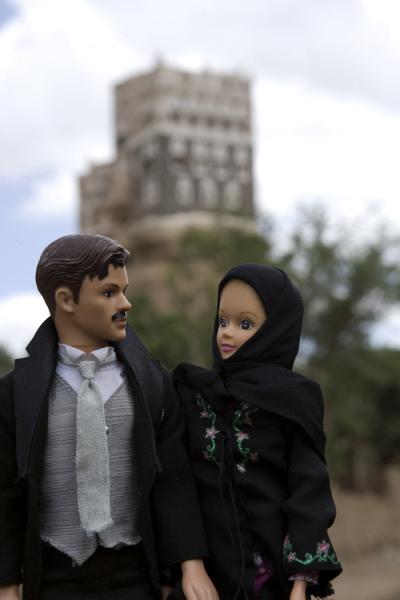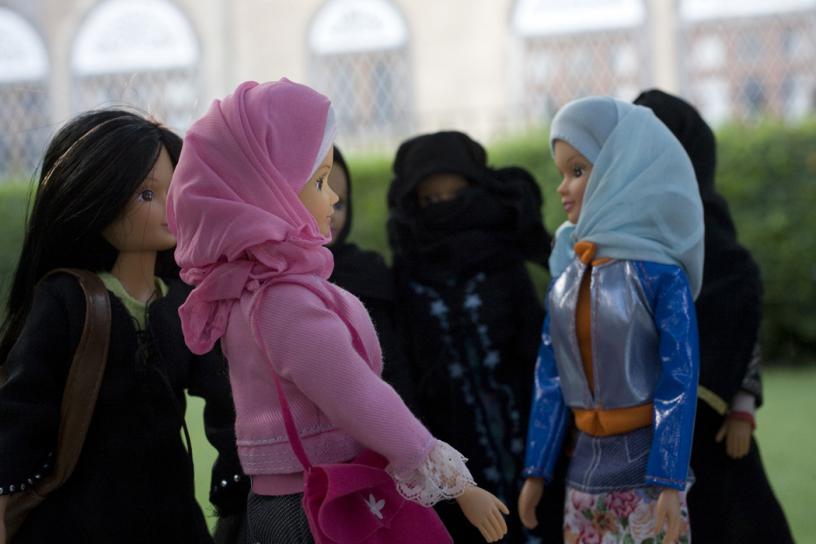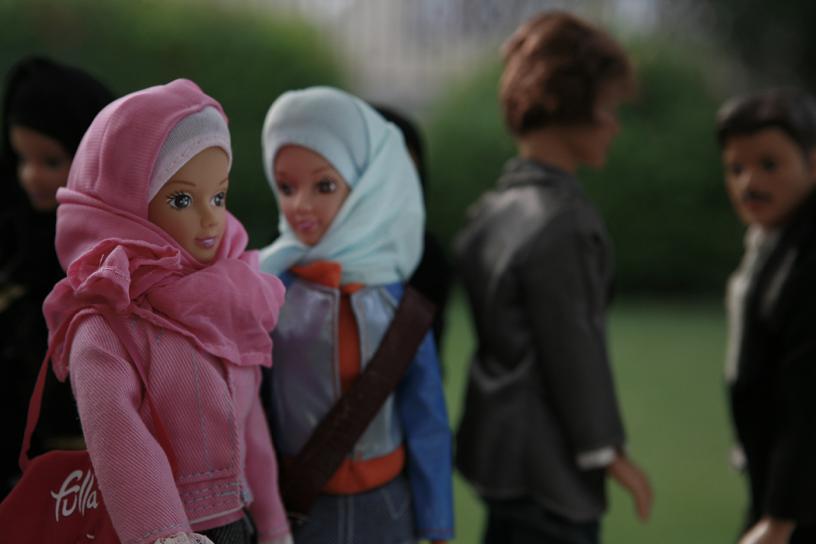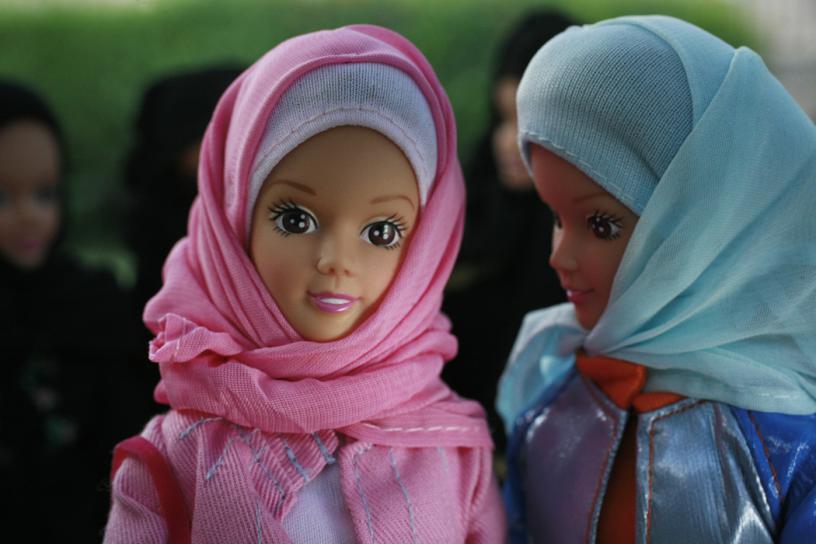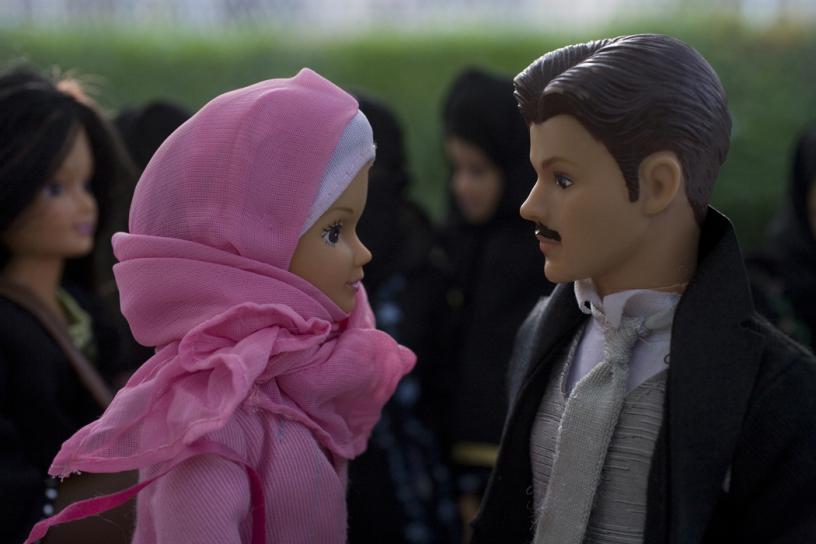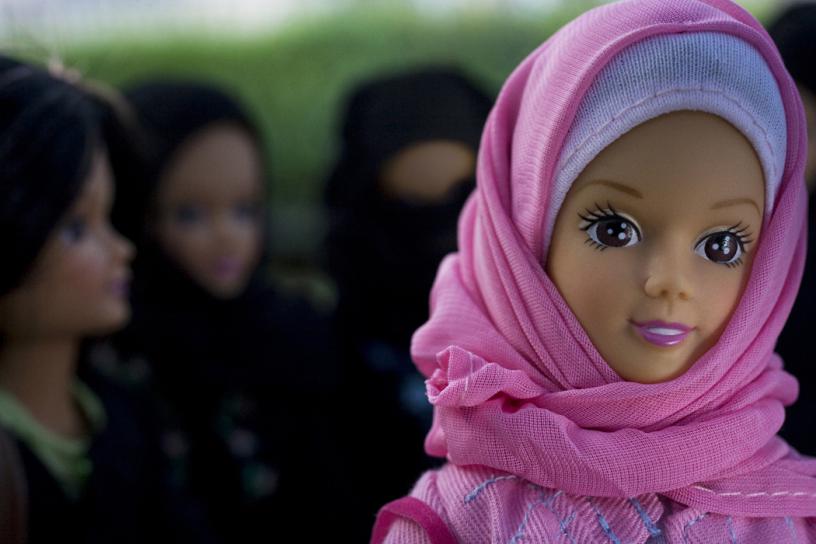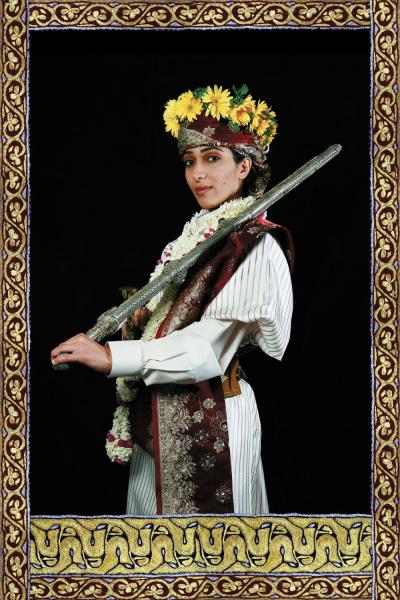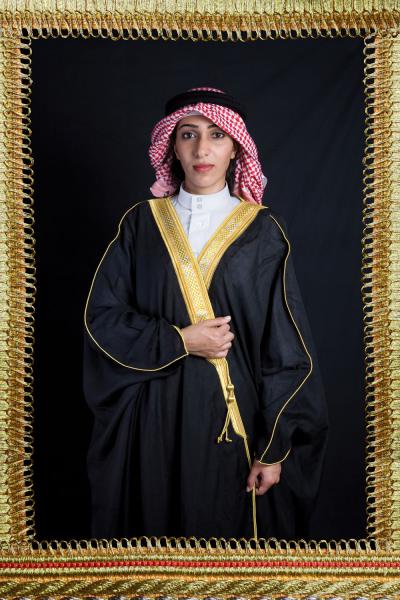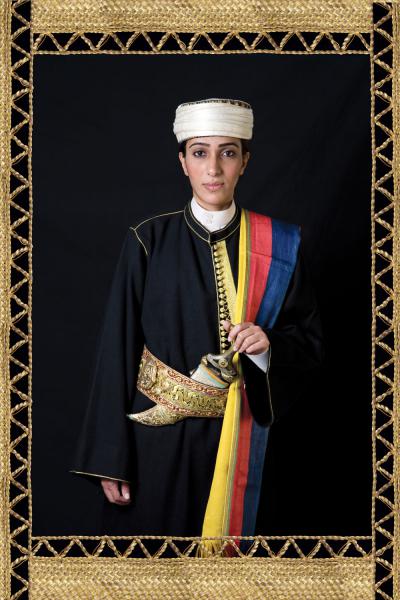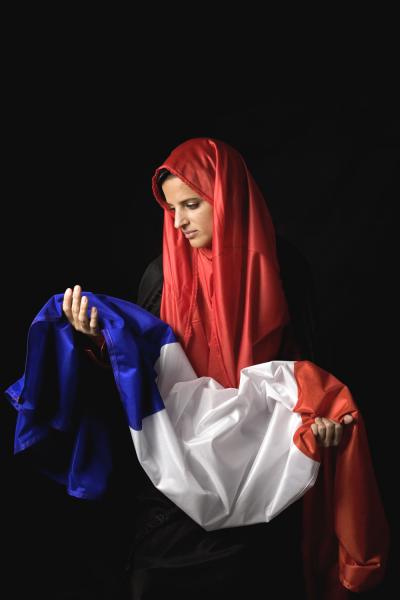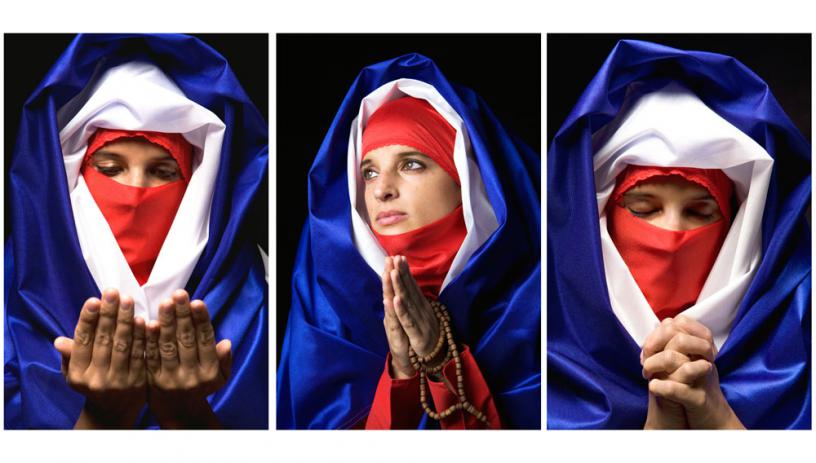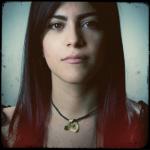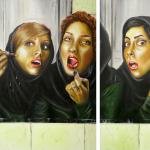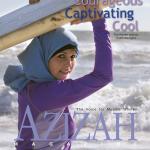Photographer Boushra Almutawakel’s ongoing series about the hijab explores the many ways to look at the hijab, and how it affects identity of and assumptions about the women who wear it.
I first started the series on the hijab/veil while attending photography school, where I attended a lecture by the Egyptian feminist writer Nawal Elsadawi. At that lecture she said that she felt that women who wore the hijab/veil or nigab were the same as women who wore makeup, in the sense that they all hid their true identities. I thought that was a fascinating perspective, and so decided to interpret this photographically. I wasn’t planning on creating a body of work on the topic.
Until then, I had been reluctant to create work on the hijab or veil, mostly because it was such a powerful iconic image that seemed to conjure strong emotions. I also felt it had been overused, and I wanted to stay clear of creating stereotypical clichéd work.
However, After September 11, I was compelled to create images on the veil, particularly since Islam and Muslims had taken international center stage. I found that we, as Arabs and Muslims, were either demonized or romanticized. Part of this paradoxical portrayal is the way Middle Eastern women have been portrayed artistically and/or in the media, as exotic, beautiful, and mysterious; or helpless, oppressed and ugly. Part of this portrayal, in many cases, has included the hijab.
As an Arab Muslim woman living in Yemen who has first-hand experience with the hijab, I have mixed feelings regarding this topic. There are certain aspects of the hijab I like and others I don't particularly care for. I don't believe it is black or white. I found the veil to be an intriguing, complex, multilayered topic.
In this ongoing project on the hijab/veil I want to explore the many faces and facets of the veil based on my own personal experiences and observations: the convenience, freedom, strength, power, liberation, limitations, danger, humor, irony, variety, cultural, social, and religious aspects, as well as the beauty, mystery, and protection. The hijab/veil as a form of self-expression; the veil as not solely an Arab Middle Eastern phenomenon, the trends, the history and politics of the hijab/veil, as well as differing interpretations, and the fear in regards to the hijab/veil.
I also want to be careful not to fuel the stereotypical widespread negative images most commonly portrayed about the hijab/veil in the Western media, especially the notion that most, or all women who wear the hijab/veil, are weak, oppressed, ignorant, and backwards. Furthermore, I hope to challenge and look at both Western and Middle Eastern stereotypes, fears, and ideas regarding the veil.
